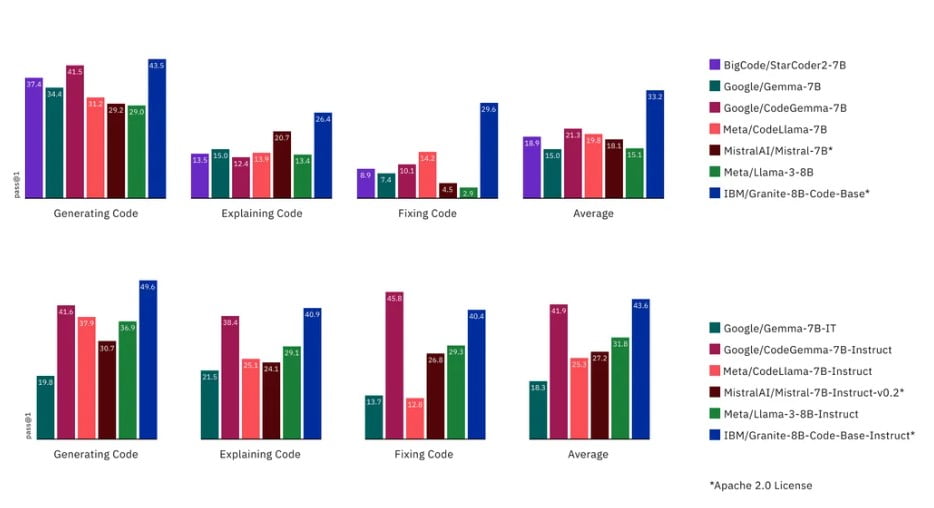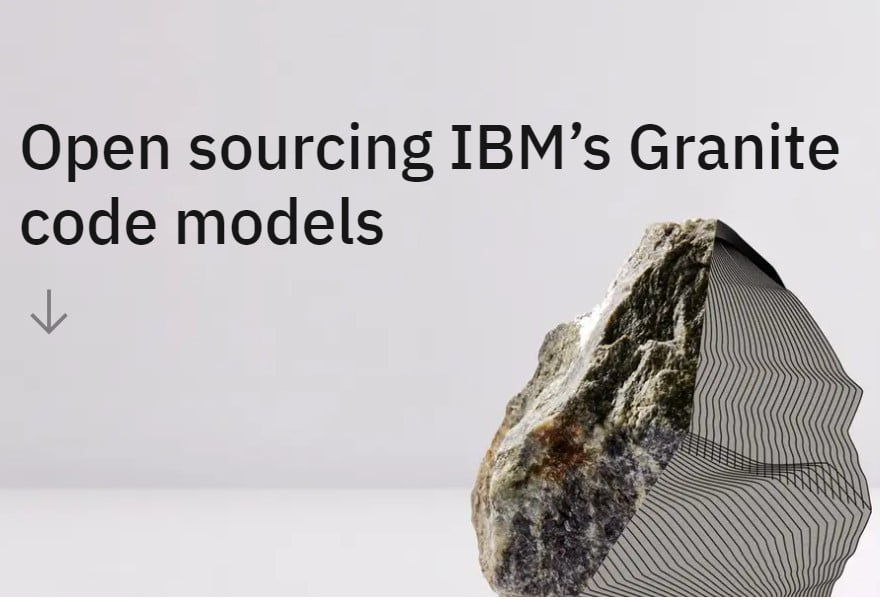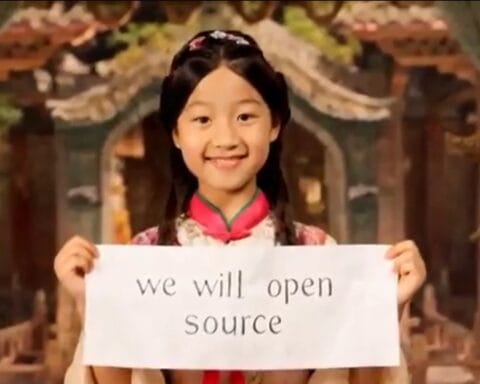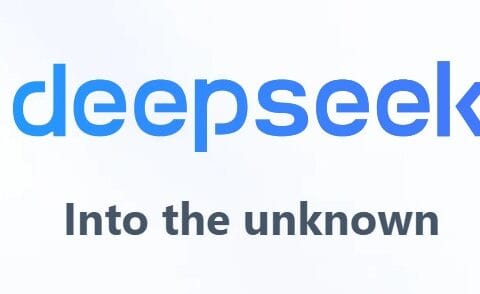Last Updated on May 15, 2024 9:15 am by Laszlo Szabo / NowadAIs | Published on May 15, 2024 by Laszlo Szabo / NowadAIs
IBM’s Granite AI Model: A New Era for Efficient Coding – Key Notes
- IBM’s Granite AI models offer AI-powered coding tools, designed to streamline software development across various tasks.
- Models range from 3 billion to 34 billion parameters, addressing needs from memory-constrained environments to enterprise applications.
- Open-source availability on platforms like GitHub and Hugging Face encourages community development and innovation.
- Granite models support functions from code generation to legacy application modernization, enhancing developer productivity and project maintainability.
- IBM emphasizes ethical AI development, ensuring models are unbiased and suitable for professional use.
Introduction
In an age where software has become the backbone of our digital world, the complexities and challenges associated with coding have only continued to grow. Developers, tasked with creating innovative applications and maintaining legacy systems, often find themselves mired in a sea of code, debugging, and troubleshooting. However, a transformative solution is accessible from the research labs of IBM, poised to redefine the software development landscape – the Granite AI models.
The Vision Behind Granite: Simplifying Coding Processes
IBM, recognizing the persistent struggles faced by developers, embarked on an ambitious journey to harness the power of artificial intelligence (AI) to streamline the coding process. Driven by the realization that even the most seasoned programmers often resort to online forums and tutorials to overcome coding hurdles, IBM’s researchers set out to create a suite of AI-powered tools that would empower developers and revolutionize the way software is written, maintained, and evolved.
Introducing the Granite Code Models
The culmination of IBM’s efforts is the Granite code model family, a series of decoder-only foundation models that cater to a diverse array of coding tasks. Ranging in size from 3 billion to a staggering 34 billion parameters, these Granite models have been meticulously designed to enhance productivity, efficiency, and collaboration in software development workflows.
Granite’s Versatility: From Memory-Constrained to Enterprise-Grade
The Granite model family offers a versatile selection to suit the needs of developers across a wide spectrum. The smaller 3 billion parameter models are tailored for memory-constrained applications, while the larger 34 billion parameter variant is optimized for enterprise-level software modernization and transformation. This flexibility empowers developers to choose the model that best aligns with their computational resources and specific coding requirements.
Unleashing the Power of Open-Source Collaboration
In a bold move to democratize access to advanced AI-powered coding tools, IBM has opened the source code of the Granite code models, making them available on popular platforms like GitHub, Hugging Face, and Red Hat’s RHEL AI. By embracing the open-source model, IBM aims to foster a vibrant community of developers, researchers, and innovators who can build upon these foundational technologies, unlocking new possibilities and redefining the standards of software development.
Granite’s Capabilities: Streamlining the Coding Workflow

The Granite code models are designed to tackle a wide range of coding-related tasks, from code generation and bug fixing to code explanation and documentation. By automating these repetitive and time-consuming activities, the Granite models empower developers to focus on more strategic and creative aspects of software creation, ultimately enhancing productivity and accelerating time-to-market.
Automating Code Generation and Debugging
One of the key strengths of the Granite models is their ability to generate code from natural language descriptions, allowing developers to quickly prototype and iterate on their ideas. Additionally, these models excel at identifying and fixing code-related issues, reducing the time and effort spent on debugging and troubleshooting.
Enhancing Code Comprehension and Documentation
The Granite models’ natural language understanding capabilities extend beyond code generation and debugging. They can also provide detailed explanations of code snippets, helping developers better comprehend the underlying logic and functionality. Furthermore, the models can assist with generating comprehensive documentation, ensuring that software projects are well-documented and maintainable.
Modernizing Legacy Applications
A particularly compelling use case for the Granite models lies in their ability to facilitate the modernization of legacy applications. By leveraging the models’ code translation and transformation capabilities, developers can seamlessly migrate mission-critical systems from outdated programming languages, such as COBOL, to more contemporary and scalable alternatives, ensuring the continued viability and security of these essential enterprise applications.
Rigorous Evaluation and Ethical Considerations
The development of the Granite models has been driven by a commitment to excellence and a deep understanding of the importance of trustworthy AI. IBM has subjected these models to rigorous evaluation, benchmarking their performance against state-of-the-art open-source and proprietary alternatives across a range of coding-related tasks, including code generation, fixing, and explanation.
Ensuring Ethical and Responsible AI
In addition to their technical prowess, the Granite models have been developed with a strong emphasis on ethical considerations. IBM has adhered to its AI ethics principles throughout the data collection and model training processes, ensuring that the models are free from biases and are suitable for enterprise-grade deployments.
Unlocking the Future of Software Development
The release of the Granite code models marks a pivotal moment in the evolution of software development. By empowering developers with AI-driven tools that streamline the coding process, IBM is poised to reshape the industry, driving increased productivity, enhanced software quality, and accelerated innovation.
Fostering a Collaborative and Inclusive Ecosystem
The open-sourcing of the Granite models further amplifies their transformative potential. By inviting developers, researchers, and enthusiasts from around the world to collaborate, contribute, and build upon these foundational technologies, IBM is nurturing an inclusive and vibrant ecosystem that will undoubtedly yield groundbreaking advancements in the field of AI-assisted software engineering.
Envisioning the Future: AI-Powered Coding Assistants
As the Granite models continue to evolve and be refined, the vision of an AI-powered coding assistant that can seamlessly integrate into developers’ workflows becomes increasingly tangible. Such assistants, armed with the capabilities of the Granite models, could revolutionize the way software is conceived, constructed, and maintained, ushering in a new era of unprecedented productivity and innovation.
Conclusion: Embracing the Granite-Powered Future
The introduction of IBM’s Granite AI models marks a pivotal moment in the software development landscape. By harnessing the power of AI to streamline coding processes, IBM is empowering developers to focus on the creative and strategic aspects of their craft, while simultaneously fostering a collaborative and inclusive ecosystem that will drive the future of software engineering. As the Granite models continue to evolve and be embraced by the global developer community, the possibilities for transformative advancements in the field of AI-assisted coding are truly boundless.
Definitions
- IBM (International Business Machines Corporation): A multinational technology company known for its computer hardware, software, and IT services.
- AI Model: A computer program that uses algorithms and statistical models to perform tasks by generalizing from input data.
- Open-source AI: AI technologies whose source code is publicly available, allowing anyone to inspect, modify, and distribute the software.
- HumanEvalPack: A benchmark package used to evaluate the performance of AI models in coding-related tasks such as code generation and bug fixing.
- COBOL (Common Business Oriented Language): An older programming language developed in 1959, widely used in business, finance, and administrative systems for companies and governments.
- AI-assisted software engineering: The use of artificial intelligence to improve various aspects of software development, from planning and coding to testing and maintenance.
Frequently Asked Questions
- What is IBM’s Granite AI Model? The Granite AI Model is a series of AI-driven tools developed by IBM to enhance software development by automating tasks like code generation, debugging, and documentation. This helps developers focus more on creative aspects of software engineering.
- How does IBM’s Granite AI Model improve code documentation? IBM’s Granite AI models can automatically generate detailed documentation for code snippets, facilitating better understanding and maintenance of software projects, thereby streamlining workflow and reducing developer workload.
- Can IBM’s Granite AI Model assist with legacy systems? Yes, the Granite AI models are particularly effective in modernizing legacy applications by translating outdated code to more modern languages, helping maintain and extend the lifespan of critical business systems.
- What makes IBM’s Granite AI Model different from other AI coding tools? IBM’s Granite AI Model stands out due to its range in model sizes suitable for different computational needs and its commitment to ethical AI development, ensuring the technology is robust and fair.
- Where can I access IBM’s Granite AI Model? The models are open-source and available on platforms like GitHub, Hugging Face, and Red Hat’s RHEL AI, allowing developers worldwide to utilize and contribute to the evolving capabilities of these AI models.









